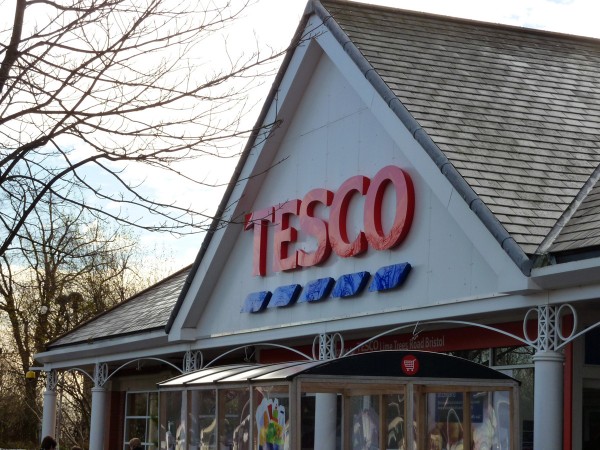 A row erupted in mid-October between Tesco, the UK’s biggest supermarket, and Unilever, the Anglo-Dutch company. Unilever is the world’s largest consumer goods manufacturer with many well-known brands, including home care products, personal care products and food and drink. Unilever, which manufactures many of its products abroad and uses many ingredients from abroad in those manufactured in the UK, wanted to charge supermarkets 10% more for its products. It blamed the 16% fall in the value of sterling since the referendum in June (see the blog Sterling’s slide).
A row erupted in mid-October between Tesco, the UK’s biggest supermarket, and Unilever, the Anglo-Dutch company. Unilever is the world’s largest consumer goods manufacturer with many well-known brands, including home care products, personal care products and food and drink. Unilever, which manufactures many of its products abroad and uses many ingredients from abroad in those manufactured in the UK, wanted to charge supermarkets 10% more for its products. It blamed the 16% fall in the value of sterling since the referendum in June (see the blog Sterling’s slide).
Tesco refused to pay the increase and so Unilever halted deliveries of over 200 items. As a result, several major brands became unavailable on the Tesco website. The dispute was dubbed ‘Marmitegate’, after one of Unilever’s products.
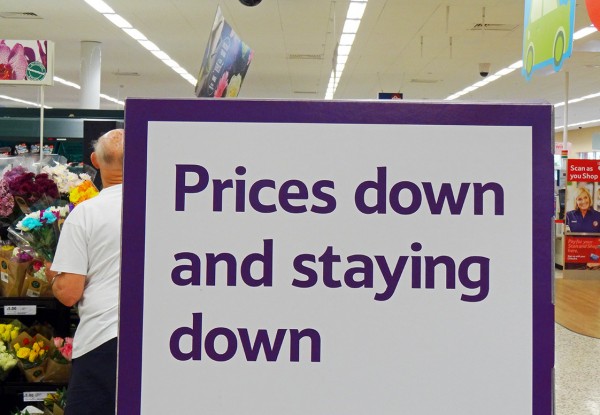 This is a classic case of power on both sides of the market: a powerful oligopolist, Unilever, facing a powerful oligopsonist, Tesco. With rising costs for Unilever resulting from the falling pound, either Unilever had to absorb the costs, or Tesco had to be prepared to pay the higher prices demanded by Unilever, passing some or all of them onto customers, or there had to be a compromise, with the prices Tesco pays to Unilever rising, but by less than 10%. A compromise was indeed reached on 13 October, with different price increases for each of Unilever’s products depending on how much of the costs are in foreign currencies. Precise details of the deal remained secret.
This is a classic case of power on both sides of the market: a powerful oligopolist, Unilever, facing a powerful oligopsonist, Tesco. With rising costs for Unilever resulting from the falling pound, either Unilever had to absorb the costs, or Tesco had to be prepared to pay the higher prices demanded by Unilever, passing some or all of them onto customers, or there had to be a compromise, with the prices Tesco pays to Unilever rising, but by less than 10%. A compromise was indeed reached on 13 October, with different price increases for each of Unilever’s products depending on how much of the costs are in foreign currencies. Precise details of the deal remained secret.
An interesting dynamic in the dispute was that Tesco and Unilever were acting as ‘champions’ for retailers and suppliers respectively. Other supermarkets were also facing price rises by Unilever. 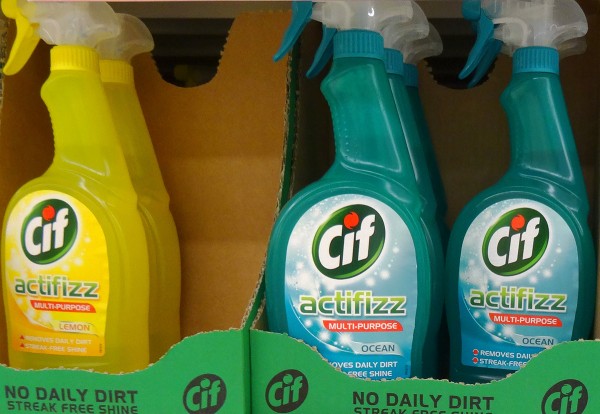 Their reactions were likely to depend on what Tesco did. Similarly, other suppliers were facing rising costs because of the falling pound. Their reactions might depend on how successful Unilever was in passing on its cost increases to retailers.
Their reactions were likely to depend on what Tesco did. Similarly, other suppliers were facing rising costs because of the falling pound. Their reactions might depend on how successful Unilever was in passing on its cost increases to retailers.
This example of ‘countervailing power’, or ‘bilateral oligopoly’, helps to illustrate just how much the consumer can gain when a powerful seller is confronted by a powerful buyer. The battle was been likened to that between two ‘gorillas’ of the industry. Its ramifications throughout industry will be interesting.
Podcasts and Webcasts
 Tesco-Unilever row: Can unique shop explain ‘Marmitegate’? BBC News, Dougal Shaw (13/10/16)
Tesco-Unilever row: Can unique shop explain ‘Marmitegate’? BBC News, Dougal Shaw (13/10/16)
 Tesco, Unilever in Brexit price clash Reuters, David Pollard (13/10/16)
Tesco, Unilever in Brexit price clash Reuters, David Pollard (13/10/16)
 Brexit price-rise warning to shoppers BBC News, Simon Jack (10/10/16)
Brexit price-rise warning to shoppers BBC News, Simon Jack (10/10/16)
 Tesco in Brexit Pricing Spat With Unilever Wall Street Journal (13/10/16)
Tesco in Brexit Pricing Spat With Unilever Wall Street Journal (13/10/16)
 Tesco battles Unilever over prices Financial Times on YouTube (14/10/16)
Tesco battles Unilever over prices Financial Times on YouTube (14/10/16)
 Tesco vs Unilever: Who won? ITV News, Joel Hills (14/10/16)
Tesco vs Unilever: Who won? ITV News, Joel Hills (14/10/16)
Articles
Tesco removes Marmite and other Unilever brands in price row BBC News (13/10/16)
Marmite Brexit Shortage ‘Just The Beginning’ Of ‘Gorilla’ Grocery Battle As Pound Slumps Huffington Post, Louise Ridley (13/10/16)
Unilever sales increase despite dozens of its brands being removed from Tesco shelves Independent, Ben Chapman (13/10/16)
Tesco-Unilever price row: Why pound value slump has caused Marmite to disappear from shelves Independent, Zlata Rodionova (13/10/16)
Tesco pulls Marmite from online store amid Brexit price row with Unilever The Telegraph, Peter Dominiczak, Steven Swinford and Ashley Armstrong (13/10/16)
Tesco runs short on Marmite and household brands in price row with Unilever The Guardian, Sarah Butler (13/10/16)
Tesco pulls products over plunging pound Financial Times, Mark Vandevelde, Scheherazade Daneshkhu and Paul McClean (13/10/16)
Brexit means…higher prices The Economist, Buttonwood’s notebook (13/10/16)
Tesco, Unilever settle prices row after pound’s Brexit dive Reuters, James Davey and Martinne Geller (14/10/16)
Questions
- To what extent can Tesco and Unilever be seen a price leaders of their respective market segments?
- What would you advise other supermarkets to do over their pricing decisions when faced with increased prices from suppliers, and why?
- What would you advise manufacturers of other consumer goods sold in supermarkets to do in the light of the Tesco/Unilever dispute, and why?
- What determines the price elasticity of demand for branded products, such as Marmite, Persil, Dove soap, Hellmann’s mayonnaise, PG Tips tea and Wall’s ice cream?
- What factors will determine in the end just how much extra the consumer pays when supermarkets are faced with demands for higher prices from major suppliers?
- Give some other examples of firms in industries where there is a high degree of countervailing power.
- What are the macroeconomic implications of a depreciating exchange rate?
- If, over the long term, the pound remained 16% below its level in June 2016, would you expect the consumer prices index in the long term to be approximately 16% higher than it would have been if the pound had not depreciated? Explain why or why not.
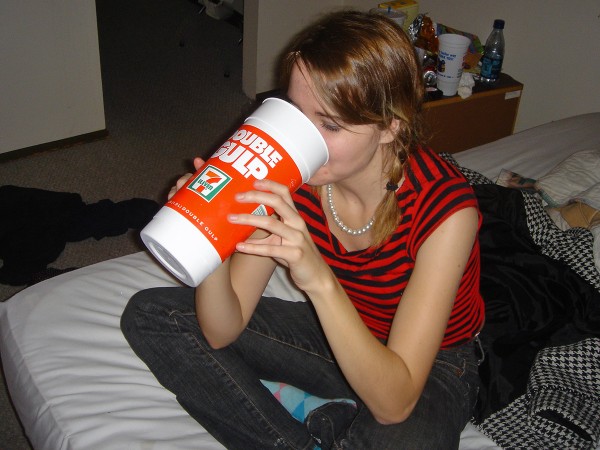 Back in October, we looked at the growing pressure in the UK for a sugar tax. The issue of childhood obesity was considered by the Parliamentary Health Select Committee and a sugar tax, either on sugar generally, or specifically on soft drinks, was one of the proposals being considered to tackle the problem. The committee studied a report by Public Health England, which stated that:
Back in October, we looked at the growing pressure in the UK for a sugar tax. The issue of childhood obesity was considered by the Parliamentary Health Select Committee and a sugar tax, either on sugar generally, or specifically on soft drinks, was one of the proposals being considered to tackle the problem. The committee studied a report by Public Health England, which stated that:
Research studies and impact data from countries that have already taken action suggest that price increases, such as by taxation, can influence purchasing of sugar sweetened drinks and other high sugar products at least in the short-term with the effect being larger at higher levels of taxation.
In his Budget on 16 March, the Chancellor announced that a tax would be imposed on manufacturers of soft drinks from April 2018. This will be at a rate of 18p per litre on drinks containing between 5g and 8g of sugar per 100ml, such as Dr Pepper, Fanta and Sprite, and 24p per litre for drinks with more than 8g per 100ml, such as Coca-Cola, Pepsi and Red Bull.
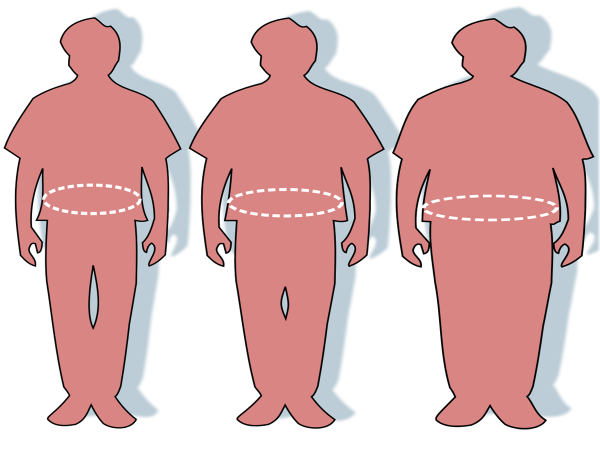 Whilst the tax has been welcomed by health campaigners, there are various questions about (a) how effective it is likely to be in reducing childhood obesity; (b) whether it will be enough or whether other measures will be needed; and (c) whether it is likely to raise the £520m in 2018/19, falling to £455m by 2020/21, as predicted by the Treasury: money the government will use for promoting school sport and breakfast clubs.
Whilst the tax has been welcomed by health campaigners, there are various questions about (a) how effective it is likely to be in reducing childhood obesity; (b) whether it will be enough or whether other measures will be needed; and (c) whether it is likely to raise the £520m in 2018/19, falling to £455m by 2020/21, as predicted by the Treasury: money the government will use for promoting school sport and breakfast clubs.
These questions are all linked. If demand for such drinks is relatively inelastic, the drinks manufacturers will find it easier to pass the tax on to consumers and the government will raise more revenue. However, it will be less effective in cutting sugar consumption and hence in tackling obesity. In other words, there is a trade off between raising revenue and cutting consumption.
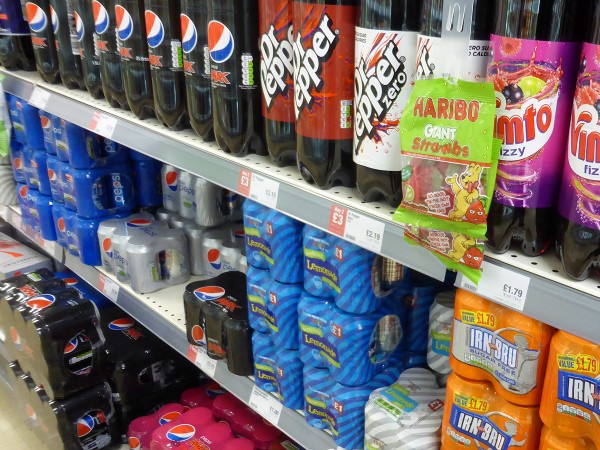 This incidence of tax is not easy to predict. Part of the reason is that much of the market is a bilateral oligopoly, with giant drinks manufacturers selling to giant supermarket chains. In such circumstances, the degree to which the tax can be passed on depends on the bargaining strength and skill of both sides. Will the supermarkets be able to put pressure on the manufacturers to absorb the tax themselves and not pass it on in the wholesale price? Or will the demand be such, especially for major brands such as Coca-Cola, that the supermarkets will be willing to accept a higher price from the manufacturers and then pass it on to the consumer?
This incidence of tax is not easy to predict. Part of the reason is that much of the market is a bilateral oligopoly, with giant drinks manufacturers selling to giant supermarket chains. In such circumstances, the degree to which the tax can be passed on depends on the bargaining strength and skill of both sides. Will the supermarkets be able to put pressure on the manufacturers to absorb the tax themselves and not pass it on in the wholesale price? Or will the demand be such, especially for major brands such as Coca-Cola, that the supermarkets will be willing to accept a higher price from the manufacturers and then pass it on to the consumer?
Then there is the question of the response of the manufacturers. How easy will it be for them to reformulate their drinks to reduce sugar content and yet still retain sales? For example, can they produce a product which tastes like a high sugar drink, 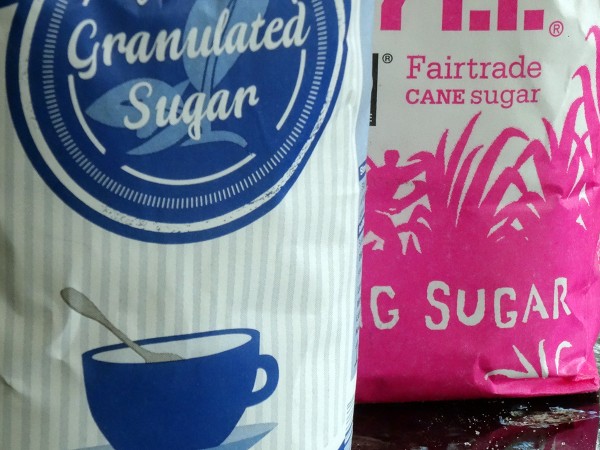 but really contains a mix between sugar and artificial sweeteners – effectively a hybrid between a ‘normal’ and a low-cal version? How likely are they to reduce the size of cans, say from 330ml to 300ml, to avoid raising prices?
but really contains a mix between sugar and artificial sweeteners – effectively a hybrid between a ‘normal’ and a low-cal version? How likely are they to reduce the size of cans, say from 330ml to 300ml, to avoid raising prices?
The success of the tax on soft drinks in cutting sugar consumption depends on whether it is backed up by other policies. The most obvious of these would be to impose a tax on sugar in other products, including cakes, biscuits, low-fat yoghurts, breakfast cereals and desserts, and also many savoury products, such as tinned soups, ready meals and sauces. But there are other policies too. The Public Health England report recommended a national programme to educate people on sugar in foods; reducing price promotions of sugary food and drink; removing confectionery or other sugary foods from end of aisles and till points in supermarkets; setting broader and deeper controls on advertising of high-sugar foods and drinks to children; and reducing the sugar content of the foods we buy through reformulation and portion size reduction.
Articles
- Sugar tax: How it will work?
BBC News, Nick Triggle (16/3/16)
- Will a sugar tax actually work?
The Guardian, Alberto Nardelli and George Arnett (16/3/16)
- Coca-Cola and other soft drinks firms hit back at sugar tax plan
The Guardian, Sarah Butler (17/3/16)
- Sugar tax could increase calories people consume, economic experts warn
The Telegraph, Kate McCann, and Steven Swinford (17/3/16)
- Nudge, nudge! How the sugar tax will help British diets
Financial Times, Anita Charlesworth (18/3/16)
- Is the sugar tax an example of the nanny state going too far?
Financial Times (19/3/16)
- Government’s £520m sugar tax target ‘highly dubious’, analysts warn
The Telegraph, Ben Martin (17/3/16)
- Sorry Jamie Oliver, I’d be surprised if sugar tax helped cut obesity
The Conversation, Isabelle Szmigin (17/3/16)
- Sugar sweetened beverage taxes
What Works for Health (17/12/15)
Questions
- What determines the price elasticity of demand for sugary drinks in general (as opposed to one particular brand)?
- How are drinks manufacturers likely to respond to the sugar tax?
- How are price elasticity of demand and supply relevant in determining the incidence of the sugar tax between manufacturers and consumers? How is the degree of competition in the market relevant here?
- What is meant by a socially optimal allocation of resources?
- If the current consumption of sugary drinks is not socially optimal, what categories of market failure are responsible for this?
- Will a sugar tax fully tackle these market failures? Explain.
- Is a sugar tax progressive, regressive or proportional? Explain.
- Assess the argument that the tax on sugar in soft drinks may actually increase the amount that people consume.
- The sugar tax can be described as a ‘hypothecated tax’. What does this mean and is it a good idea?
- Compare the advantages and disadvantages of a tax on sugar in soft drinks with (a) banning soft drinks with more than a certain amount of sugar per 100ml; (b) a tax on sugar; (c) a tax on sugar in all foods and drinks.
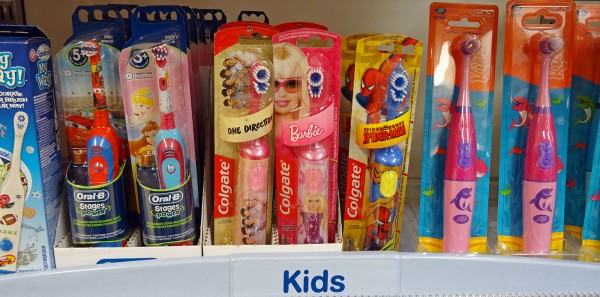 Virtually all manual toothbrushes sold in the UK are made by Oral B (Procter & Gamble), Colgate (Colgate-Palmolive) or Listerene Reach (Johnson & Johnson). This is a powerful oligopoly.
Virtually all manual toothbrushes sold in the UK are made by Oral B (Procter & Gamble), Colgate (Colgate-Palmolive) or Listerene Reach (Johnson & Johnson). This is a powerful oligopoly.
The manufacturers distribute toothbrushes primarily through large powerful retailers, such as supermarkets and Boots. It is difficult for new entrants to persuade these retailers to stock their product. What is more, with large advertising and marketing budgets, existing toothbrush manufacturers make it difficult for new brands to attract customers.
But one company has successfully entered the children’s section of the market when Boots  agreed to stock its product. The Rockabilly Kids toothbrush has a feature likely to appeal to both children and their parents. It wobbles! With a weight in the bottom, the brush rights itself, with a wobble, when dropped or simply placed on the basin or shelf.
agreed to stock its product. The Rockabilly Kids toothbrush has a feature likely to appeal to both children and their parents. It wobbles! With a weight in the bottom, the brush rights itself, with a wobble, when dropped or simply placed on the basin or shelf.
This clearly appeals to small kids. It also appeals to their parents who can do away with unhygienic toothbrush holders. What is more, the self-righting wobbly toothbrush, by making the whole process of teeth cleaning fun for young kids, can help them gain good habits of oral hygiene.
So just how did the manufacturer overcome the barriers to entry into this well-established oligopoly? The following article examines how.
Can ‘wobbly’ kids toothbrushes shake the Oral B/Colgate oligopoly? The Telegraph, Rebecca Burn-Callander (10/1/15)
Questions
- What barriers to entry exist in the manual toothbrush market?
- How did Hamish Khayat overcome these barriers?
- Why did he decide against a toothbrush subscription service?
- How would you decide whether £6.99 is the right price?
- Is it a good idea for him to diversify into electric kids toothbrushes?
- How are the big toothbrush manufacturers likely to respond to the expansion of Rockabilly Kids?
 A row erupted in mid-October between Tesco, the UK’s biggest supermarket, and Unilever, the Anglo-Dutch company. Unilever is the world’s largest consumer goods manufacturer with many well-known brands, including home care products, personal care products and food and drink. Unilever, which manufactures many of its products abroad and uses many ingredients from abroad in those manufactured in the UK, wanted to charge supermarkets 10% more for its products. It blamed the 16% fall in the value of sterling since the referendum in June (see the blog Sterling’s slide).
A row erupted in mid-October between Tesco, the UK’s biggest supermarket, and Unilever, the Anglo-Dutch company. Unilever is the world’s largest consumer goods manufacturer with many well-known brands, including home care products, personal care products and food and drink. Unilever, which manufactures many of its products abroad and uses many ingredients from abroad in those manufactured in the UK, wanted to charge supermarkets 10% more for its products. It blamed the 16% fall in the value of sterling since the referendum in June (see the blog Sterling’s slide). This is a classic case of power on both sides of the market: a powerful oligopolist, Unilever, facing a powerful oligopsonist, Tesco. With rising costs for Unilever resulting from the falling pound, either Unilever had to absorb the costs, or Tesco had to be prepared to pay the higher prices demanded by Unilever, passing some or all of them onto customers, or there had to be a compromise, with the prices Tesco pays to Unilever rising, but by less than 10%. A compromise was indeed reached on 13 October, with different price increases for each of Unilever’s products depending on how much of the costs are in foreign currencies. Precise details of the deal remained secret.
This is a classic case of power on both sides of the market: a powerful oligopolist, Unilever, facing a powerful oligopsonist, Tesco. With rising costs for Unilever resulting from the falling pound, either Unilever had to absorb the costs, or Tesco had to be prepared to pay the higher prices demanded by Unilever, passing some or all of them onto customers, or there had to be a compromise, with the prices Tesco pays to Unilever rising, but by less than 10%. A compromise was indeed reached on 13 October, with different price increases for each of Unilever’s products depending on how much of the costs are in foreign currencies. Precise details of the deal remained secret. Their reactions were likely to depend on what Tesco did. Similarly, other suppliers were facing rising costs because of the falling pound. Their reactions might depend on how successful Unilever was in passing on its cost increases to retailers.
Their reactions were likely to depend on what Tesco did. Similarly, other suppliers were facing rising costs because of the falling pound. Their reactions might depend on how successful Unilever was in passing on its cost increases to retailers. Tesco-Unilever row: Can unique shop explain ‘Marmitegate’? BBC News, Dougal Shaw (13/10/16)
Tesco-Unilever row: Can unique shop explain ‘Marmitegate’? BBC News, Dougal Shaw (13/10/16) Tesco, Unilever in Brexit price clash Reuters, David Pollard (13/10/16)
Tesco, Unilever in Brexit price clash Reuters, David Pollard (13/10/16) Brexit price-rise warning to shoppers BBC News, Simon Jack (10/10/16)
Brexit price-rise warning to shoppers BBC News, Simon Jack (10/10/16) Tesco in Brexit Pricing Spat With Unilever Wall Street Journal (13/10/16)
Tesco in Brexit Pricing Spat With Unilever Wall Street Journal (13/10/16) Tesco battles Unilever over prices Financial Times on YouTube (14/10/16)
Tesco battles Unilever over prices Financial Times on YouTube (14/10/16) Tesco vs Unilever: Who won? ITV News, Joel Hills (14/10/16)
Tesco vs Unilever: Who won? ITV News, Joel Hills (14/10/16)




